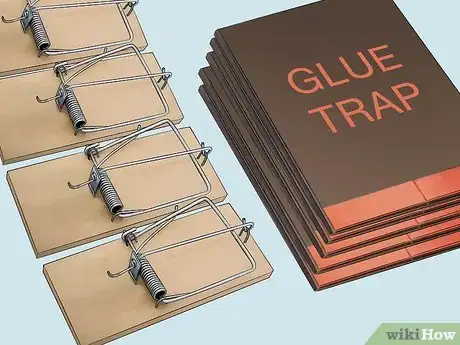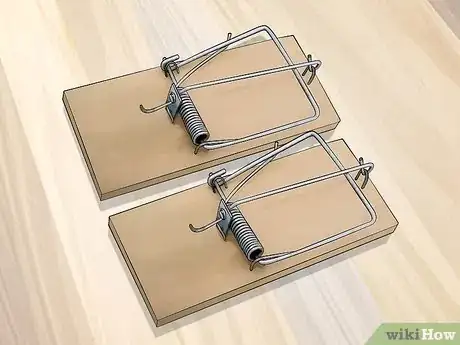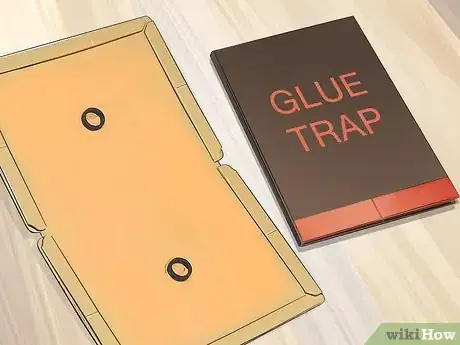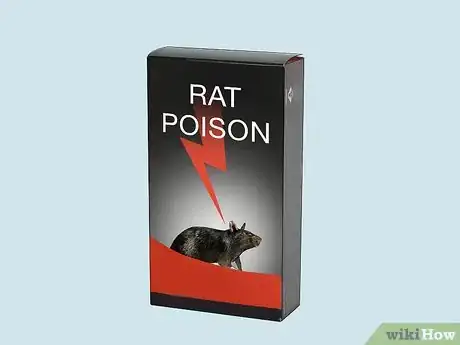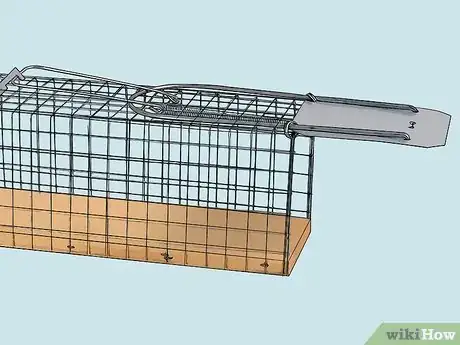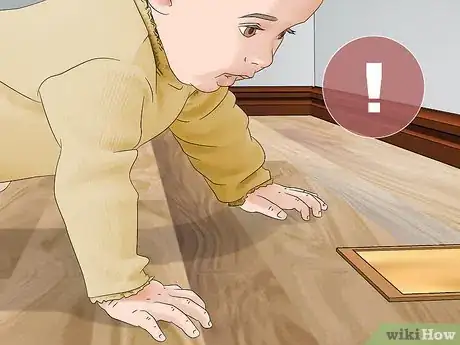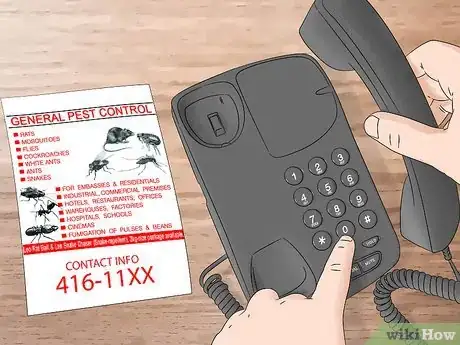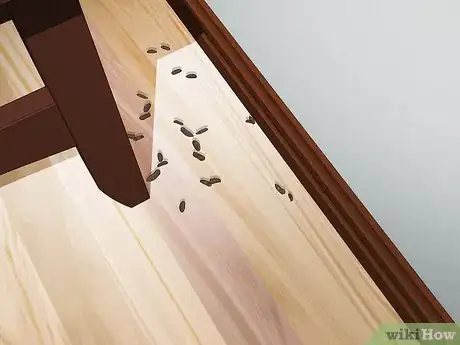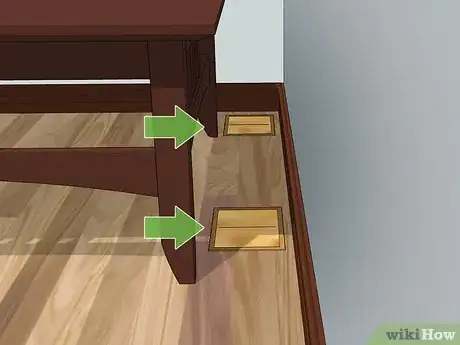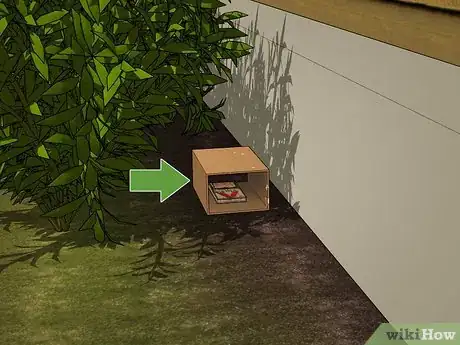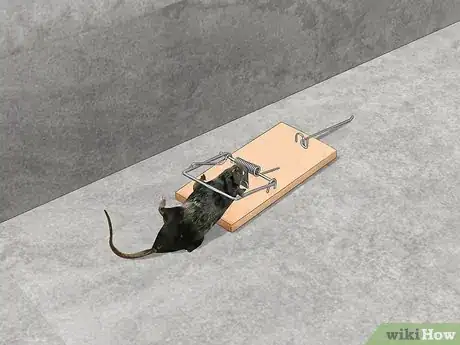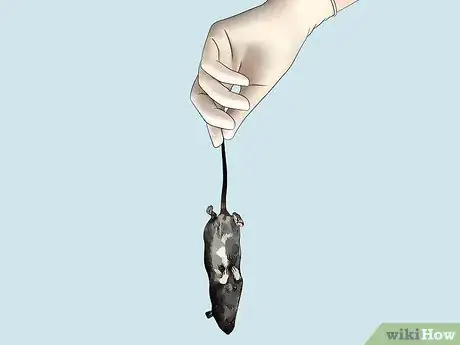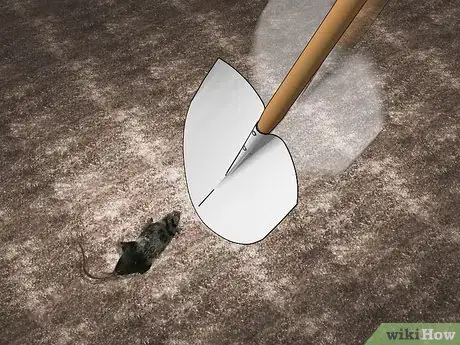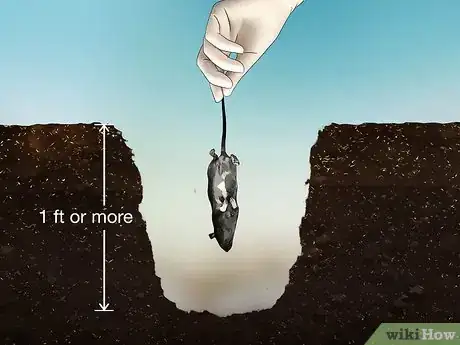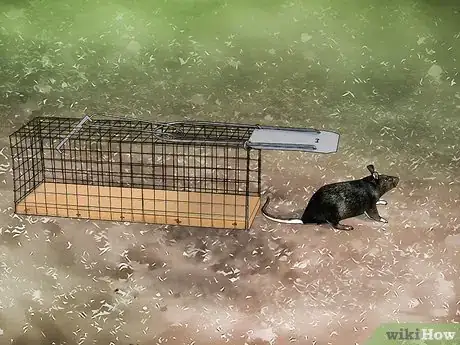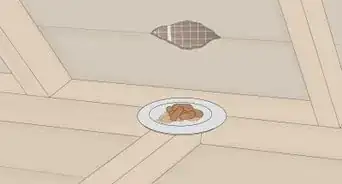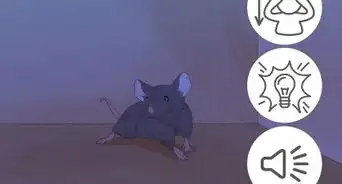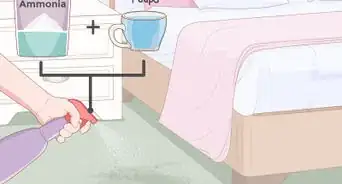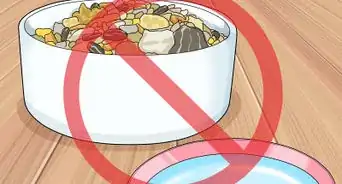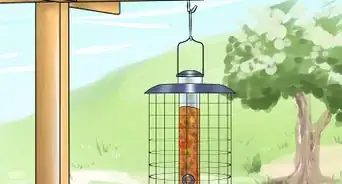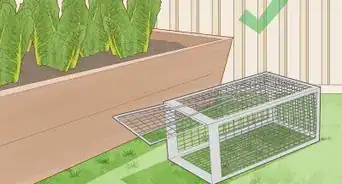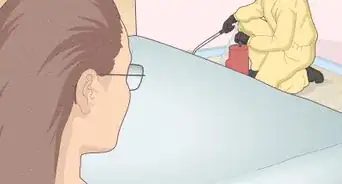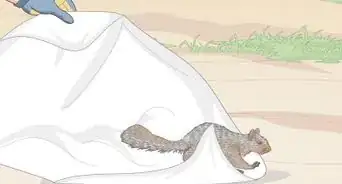This article was co-authored by Chris Parker. Chris Parker is the Founder of Parker Eco Pest Control, a sustainable pest control service in Seattle, Washington. With over seven years of experience, Chris specializes in Integrated Pest Management and doesn’t use any chemicals for pest removal. He offers removal services for ants, rodents, fleas, spiders, wasps, and more. Chris is a certified Commercial Pesticide Applicator in Washington State and received his bachelor’s from the University of Washington.
There are 8 references cited in this article, which can be found at the bottom of the page.
This article has been viewed 241,339 times.
Rats are one of the most infamous, well-known, and hard-to-eliminate pests in the modern world. A rat infestation can be a serious problem can spread harmful parasites (like fleas) and illnesses (like Hantavirus, and, famously, the Black Plague.)[1] To deal with a rat problem, start laying traps early and often and be willing to call in professional help if the infestation gets out of hand.
Steps
Choosing a Trap
-
1Buy at least several traps. Once you've identified a rat problem, you'll want to work fast. The quicker you can start trapping rats, the less time the population of rats will have a chance to expand. Start by heading to your local hardware store and buying plenty of rat traps — the more you're able to set, the better chance you stand of trapping rats. Most disposable rat traps are available for quite cheap, so it's not a bad idea to buy one or two more than you think you'll need. If the extra money prevents major rat problems in the future, it will have been a wise investment. See the steps below for information on the different types of rat traps available.
- The sole exception here is when dealing with live traps. Since live traps are almost always significantly more expensive than ordinary disposable rat traps, it can be impractical to buy more than one. Thus, live traps are best-suited for small rat problems — instances when there's only about one or two rats loose in your house. Any larger, and you run the risk of being unable to catch all of the rats before they breed. See below for more information on live traps.
-
2Use snap traps. The "classic" spring-loaded wooden snap trap is a proven, effective way to start trapping rats. These traps work by snapping a metal wire over the rat's neck when it tries to grab the bait. Snap traps usually come in several sizes, so be sure to pick one that's big enough to kill to the rats at your residence — using traps that are too small may maim the rat without killing it or lead to a protracted death from strangulation.
- Pros: When used correctly, kills rats quickly and effectively. Traps are reusable and are basically effective forever until they're sprung, so they can be left in "problem areas" semi-permanently.[2]
- Cons: Can occasionally cause bleeding, gore, etc. Possible to hurt yourself if the trap is sprung accidentally.
Advertisement -
3Use glue traps. Glue traps are pads or sheets covered in a very sticky adhesive with a spot for bait in the middle. When the rat tries to get the bait, its legs are caught in the glue. As it struggles to free itself, its mouth gets caught in the glue and it suffocates. However, this is cruel and inhumane, because the rodent will die a slow/painful death. Animal rights groups recommend other types of traps, such as snap traps or kill-free traps. While glue traps are considered fairly effective for killing mice, since rats are bigger and stronger, there is some doubt as to their effectiveness at controlling rat populations. Even large, rat-sized glue traps may not always kill a rat, requiring you to euthanize it yourself.[3]
- Pros: Cheap, disposable. Can also catch bugs, spiders, etc. inadvertently.
- Cons: Won't always kill rats quickly. Occasionally won't kill rats at all, requiring you to put the rat out of its misery. Considered very inhumane and cruel by many animal rights groups, including PETA.[4] Aren't effective forever — glue will eventually start to dry.
-
4Use poison traps. Poison-based rat traps usually come in the form of a pre-packaged poison "station." The station is placed in a spot where the rat is likely to come across it, the rat eats it, wanders away, and eventually dies. While poison can be an effective way to kill rats, out of all the trapping methods, poison usually poses the most serious danger to small children, pets, and so on, so it's crucially important to use these sorts of traps responsibly.
- Pros: Low maintenance — not necessary to check for dead rats, as the rats will leave the trap and die elsewhere. Can be left out semi-permanently if poison is consistently refilled. These traits make poison traps good choices for outdoor rat control.
- Cons: Death can often take hours or days. Not guaranteed that rats will eat the correct dosage. Possible to accidentally poison pets, small children, or non-pest animals if used improperly. In indoor rat infestations, rats may die in inaccessible parts of the residence and begin to rot.
-
5Use a live trap if it's legal in your areas. You don't necessarily need to kill a rat to trap it— depending on where you live, you may be able to use a live trap. However, it's important to find out whether it's legal in your area. For instance, you may not legally be able to relocate the rat after you catch it in a live trap.
- If you use a live trap, make sure you choose a trap that the rat can't fit through. Most rats can even fit through spaces as narrow as 0.75 in (1.9 cm).
- Be sure to check your live trap at least every 24 hours. Otherwise, the rat could starve to death, which is inhumane and, in most places, illegal.
-
6Take any pets or young children into account. When choosing your traps, it's important to consider any people or animals at your residence that could conceivably fall victim to your trap by accident — namely, pets and small children. If you do have pets or small children, you may not necessarily need to avoid lethal traps all together, but you should be ready to take all necessary precautions to ensure that your children and pets won't have access to the traps. This can include keeping a close eye on your child or pet when it is around the traps and, if necessary, creating physical barriers for its own safety with playpen walls, etc.
- For especially small pets, like miniature dogs, ferrets, hamsters, and so on, larger snap traps can potentially cause serious injury. Bigger animals and children may still be at risk for broken bones, gashes, and so on if they step on one of the traps.
- Glue traps can lead to intense pain and discomfort if a pet or child accidentally steps on one. In rare cases, the glue trap can be life-threatening if it attaches to the area around the mouth and nose. To remove a glue trap, apply baby oil to the spot where it is stuck and pry it off with a spoon.[5]
- Poison can cause symptoms ranging from mild to severe depending on how much is ingested. If you have reason to believe your pet or child has eaten rat poison, contact your local poison control center immediately — the help you get may be life-saving. Also, keep the packaging the poison came in, even if you used it all. It will have important information for a medical provider, veterinarian, or poison control person.
-
7For major rat infestations, call an exterminator. While it's possible to get rid of lots of rats with your own traps, sometimes, it's best to leave the problem to professionals. If you don't feel comfortable trapping rats yourself or you believe your infestation is too large for you to control, call a pest control expert as soon as possible. Most pest control companies offer experienced exterminators trained to use a wide range of solutions, including mechanical traps, kill and seal traps, ultrasonic repellants and rodenticides. Signs of a major infestation include:[6]
- Rats visible in the open — most rats like to hide as much as possible, so if you see them regularly, it's likely that there are many.
- Frequent appearance of small, pellet-like droppings.
- Greasy, dirty "trails" along walls.
- Bite/nibble marks in stored food.
- Small gnawed openings in corners of walls and cupboards.
- Infestation signs that don't seem to improve as rats are caught.
Placing Your Traps
-
1Bait your traps before placing them. Once you've selected and bought your traps, you'll need to bait them (with the exception of poison traps, which use the poison itself as bait.) Apply your bait to the designated spot on the trap according to any instructions provided with it. Typically, for snap traps, the bait will need to go on the flat "platform" that sits opposite the swinging arm. Glue traps, on the other hand, often have a peg in the middle that bait can sit on. Live traps usually have a similar platform for the bait in the center. Your bait should be a small, thimble sized amount of a food that's appetizing to rats — don't use too much or it will be easier for the rat to take it without springing the trap. Just a few common examples of rat bait are listed below:
- Peanut butter
- Bacon or meat
- Most fruits and vegetables
- Cereals
- Commercial rat baits (available at hardware stores and online pest control retailers)
-
2Look for rat droppings as signs of high-traffic areas. One of the biggest tell-tale signs of a rat problem is the presence of small, brown, pellet-like droppings.[7] Anywhere you find these droppings is an acceptable place to put a trap — if a rat has been there before, there's a good chance it will be there again.
- Take care when handling or cleaning rat droppings — certain illnesses, like Hantavirus, can be caused by accidentally ingesting or inhaling small particles from rat feces.[8] Wear gloves and a face mask when disposing of rat droppings and be sure to wash your hands when you've finished.
- You may also see grease marks where the oils on the rats' fur has rubbed off on a surface. These will typically be found near entry holes or along pathways.[9]
- Also, look for chew marks where the rats may have tried to enlarge entrances into their home.[10]
-
3Set indoor traps along walls and in corners. For indoor rat problems, it's usually best to place traps directly next to walls and corners where rats (or rat droppings) have been spotted. Rats hate running out in the open where they can be seen easily, so putting rat traps in the middle of the floor is unlikely to warrant results unless they're in a location where you've specifically noticed rats before.
- If using snap traps, place the traps perpendicular to the wall so that the baited end is touching it. This forces the animals to touch the bait platform if they want to continue along the same path as they've been using before.
-
4Set outdoor traps on narrow paths and under foliage. Rats can be a little harder to trap outdoors because it's harder to predict their movements. Try placing traps along narrow locations where you've observed rats before, like tree branches, the top edges of fences, gutters, and so on. You may also want to place a few traps under dense foliage, as rats love the safety and cover that thick bushes and shrubs can provide.
- If you have time, try spending a few minutes looking for "rat runs" — small, narrow paths in grass that rats use to come and go. Placing traps along rat runs is a great way to start catching rats.
- If you're putting snap traps outside, consider putting them inside a trap box. That way, you won't accidentally trap an animal like a cat.
-
5Consider placing traps out unset for a few days. Rats may be wary of new objects that suddenly appear in the path of their established trails, which can make them reluctant to go for traps even when bait is used. In these cases, you may want to consider leaving your traps out "unset" for a few days so that the rats have a chance to get to get used to them. Then, set the traps and add bait — the rats should approach them without fear, making it much more likely that you'll successfully catch one.
-
6Check your traps frequently. Once you've set out traps, make a habit of checking them once a day for successful catches. You do not want to discover a trapped rat several days after it's died, as decaying rat corpses can be accompanied by an unpleasant smell, the presence of bugs and other scavengers, and severely unsanitary microorganisms. See the section below for more information about disposing of rats once you've trapped them.
- It's just as important to check live traps as it is to check lethal traps. Leaving a rat in a live trap for a long period of time can be potentially deadly, especially in very hot or cold climates where the rat is vulnerable to exposure.
Disposing of Trapped Rats
-
1Do not touch rats directly. While not all rats are carriers of dangerous diseases and parasites, some are, so it's very important to take proper precautions to protect yourself when handling rats (living or dead.) Wear sterile gloves and avoid touching the rat itself, instead grabbing hold of the trap. Remove your gloves and wash your hands when you're done disposing of the rat and never touch your face, eyes, or mouth after touching either a rat or its trap without thoroughly cleaning your hands.
-
2Euthanize any rats that are injured but not dead. Unfortunately, lethal traps do not always work perfectly — occasionally, you may find a trapped rat that is maimed and unable to escape, but still living. In this case, the most humane thing to do is often to put the animal out of its misery by quickly and cleanly killing it. Releasing an injured rat into the wild is likely to cause it to die a relatively more painful death from starvation or being eaten.
- While many animal rights groups (including PETA) recommend against the use of lethal traps in the first place, among more mainstream pest-control resources, two methods of euthanasia are usually deemed acceptable for rodents: cervical dislocation and asphyxiation. Cervical dislocation involves breaking the rat's spinal cord by pressing on the base of its neck with quick, forceful pressure, while asphyxiation involves putting the rat in a small container and flooding it with an inert gas like carbon dioxide.
- The easiest way to euthanize a rat is to remove its head with a shovel.
- See our article on humanely killing a rodent for more information on this topic.
-
3Bury or throw out dead rats. If you find a dead rat in your trap, disposing of it is usually fairly simple: either carefully place the rat in a plastic bag and set it in your outdoor garbage container or else dig a hole in the ground a few feet deep and bury it. If you dig a hole, make sure it's not any shallower than a foot or so or neighborhood pets may dig up the rat's carcass.
- In the case of glue traps, you'll need to throw the entire trap out with the dead rat. Don't re-use glue traps — they won't work as well the second time and it can be very difficult to cleanly un-stick the rat from the trap in the first place.
-
4Release live rats outdoors. If you've caught a rat in a live trap, simply take it outdoors, set the trap on the ground, and carefully open the trap door to let it go. If you're interested in the rat's survival, try to release it within about 100 yards (91.4 m) of where you found it. Releasing rats in unfamiliar territory makes them much more vulnerable to predators and starvation.[11]
- Note, however, that if you release a rat into the wild alive, there's not necessarily any reason why it won't find its way back into your house. In this case, it's important to "rodent-proof" your house to ensure that the root cause for the rat infestation is eliminated. This includes removing any food sources, sealing holes in the outside of your house with caulk or steel wool, tidying up any messes to remove potential nesting places, and more. See our article on rodent-proofing your home for more information.
-
5Wash your hands and your trap when finished. When you've disposed of your rat, remove your gloves and give your hands a thorough washing to remove any bacteria particulate matter that may have passed from the rat to you. After this, you may carefully wash your trap to clean it for future use (except in the case of glue traps, which aren't meant to be reused.)
Expert Q&A
Did you know you can get expert answers for this article?
Unlock expert answers by supporting wikiHow
-
QuestionWhat's the best type of rat trap?
 Chris ParkerChris Parker is the Founder of Parker Eco Pest Control, a sustainable pest control service in Seattle, Washington. With over seven years of experience, Chris specializes in Integrated Pest Management and doesn’t use any chemicals for pest removal. He offers removal services for ants, rodents, fleas, spiders, wasps, and more. Chris is a certified Commercial Pesticide Applicator in Washington State and received his bachelor’s from the University of Washington.
Chris ParkerChris Parker is the Founder of Parker Eco Pest Control, a sustainable pest control service in Seattle, Washington. With over seven years of experience, Chris specializes in Integrated Pest Management and doesn’t use any chemicals for pest removal. He offers removal services for ants, rodents, fleas, spiders, wasps, and more. Chris is a certified Commercial Pesticide Applicator in Washington State and received his bachelor’s from the University of Washington.
Founder, Parker Eco Pest Control
-
QuestionHow do you know where rats are getting in?
 Chris ParkerChris Parker is the Founder of Parker Eco Pest Control, a sustainable pest control service in Seattle, Washington. With over seven years of experience, Chris specializes in Integrated Pest Management and doesn’t use any chemicals for pest removal. He offers removal services for ants, rodents, fleas, spiders, wasps, and more. Chris is a certified Commercial Pesticide Applicator in Washington State and received his bachelor’s from the University of Washington.
Chris ParkerChris Parker is the Founder of Parker Eco Pest Control, a sustainable pest control service in Seattle, Washington. With over seven years of experience, Chris specializes in Integrated Pest Management and doesn’t use any chemicals for pest removal. He offers removal services for ants, rodents, fleas, spiders, wasps, and more. Chris is a certified Commercial Pesticide Applicator in Washington State and received his bachelor’s from the University of Washington.
Founder, Parker Eco Pest Control Check the outside of your home for holes. If a hole is the size of a dime, it's big enough for a mouse to fit through, and if it's the size of a quarter, a rat can fit through. If the holes are active, you'll likely see grease marks where oil from the rats' fur has rubbed off. You might also see chew marks where the rats have enlarged the hole to fit through.
Check the outside of your home for holes. If a hole is the size of a dime, it's big enough for a mouse to fit through, and if it's the size of a quarter, a rat can fit through. If the holes are active, you'll likely see grease marks where oil from the rats' fur has rubbed off. You might also see chew marks where the rats have enlarged the hole to fit through. -
QuestionThe trap is gone where it was placed in the garage. Can a rat move the trap?
 Community AnswerThe trap might have only caught the tail of the rodent, moving the trap when the rat ran away with it. Another possibility is that a larger predator found the rat in the trap dead and took it--trap and all--to another location to eat it, leaving just the trap behind.
Community AnswerThe trap might have only caught the tail of the rodent, moving the trap when the rat ran away with it. Another possibility is that a larger predator found the rat in the trap dead and took it--trap and all--to another location to eat it, leaving just the trap behind.
Warnings
- You may want to avoid handling traps with your bare hands as you set them — some anecdotal sources claim that rats will be able to pick up your scent.⧼thumbs_response⧽
References
- ↑ http://www.cdc.gov/rodents/diseases/direct.html
- ↑ http://www.ipm.ucdavis.edu/PMG/PESTNOTES/pn74106.html
- ↑ http://www.ipm.ucdavis.edu/PMG/PESTNOTES/pn74106.html
- ↑ http://www.peta.org/issues/wildlife/cruel-wildlife-control/cruel-wildlife-trapping/glue-traps-pans-pain/
- ↑ http://www.humanesociety.org/animals/resources/facts/glue_boards.html
- ↑ https://www.orkin.com/pests/rodents/rats/what-are-the-signs-of-rat-infestations
- ↑ Chris Parker. Founder, Parker Eco Pest Control. Expert Interview. 15 January 2021.
- ↑ http://www.orkin.com/rodents/rats/rat-borne-diseases/
- ↑ Chris Parker. Founder, Parker Eco Pest Control. Expert Interview. 15 January 2021.
- ↑ Chris Parker. Founder, Parker Eco Pest Control. Expert Interview. 15 January 2021.
- ↑ http://www.peta.org/issues/wildlife/living-harmony-wildlife/rats/
About This Article
If you're only dealing with a few rats, try setting a live trap by placing it in a kitchen or problem area. For larger rat infestations, set 6-7 snap traps around your house or building. Make sure to bait your traps with meat or peanut butter, and place them in areas where there are frequent rat droppings. After you've caught a rat, put on gloves and dispose of it in the garbage as soon as possible. To learn about other types of rat traps, such as glue traps, read on.
